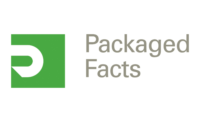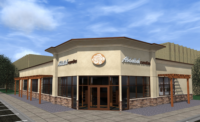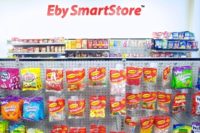It’s not particularly unusual to hear children express their delight for candy. What youngster wouldn’t want a sweet? But to have sleepless nights about seeing candy processing equipment? Well, it takes a candy maker’s son — actually, a candy maker’s great-grandson — to match that profile.
“I remember coming to the plant with my grandfather (Glen Oletzke) and learning how to make candy,” recalls Steve Hegedus, president and ceo of Apple Valley, Minn.-based Abdallah Candies. “He’d teach me how to make candy canes and marshmallow. That’s when you can say I fell in love with candy.”
At-a-Glance: Abdallah Candies
Headquarters: Apple Valley, Minn.
Sales: $20 million (Candy Industry estimate)
Employees: 145 permanent; two shifts (Monday through Friday)
Products: Chocolates (truffles, caramel clusters, caramel, toffee, mints, barks, creams, sugar-free)
Management team: Steve Hegedus, president and ceo; Karen Hegedus, v.p. – administration and human resources; Michael Hegedus, plant manager; Ryan Hegedus, production manager; Michael Hegedus Jr., plant engineer
And this wasn’t a mere sweet tooth, mind you.
“I’d get so excited about going to a RCI [Retail Confectioner’s International] convention, I couldn’t sleep nights before the trip,” he says. “I was so pumped up about being able to see all the equipment and visiting the candy shops.”
Hegedus still gets excited about candy, specifically about making quality chocolates, caramels, toffees — about 200 different varieties in total. And he did have a few sleepless nights during the past two years, the time it took to plan, acquire, build, equip and move into a new 100,000-sq-ft. manufacturing complex that houses offices and a 2,200-sq.-ft. retail store.
“When we started looking at future growth two years ago, we started exploring ways we could expand (at the company’s Burnsville, Minn. facility),” Hegedus says. “We looked at going up, going sideways.”
All of those options posed challenges, costly ones at that, be it adding a second story and the complications involved with local and federal regulations, or expanding horizontally, which meant acquiring buildings and properties and demolishing them.
“We really were working in cramped quarters, virtually standing shoulder to shoulder,” he adds. “It was mind-boggling. We had to move three things to get to one thing. Although we didn’t want to move, we had to.”
Keep in mind that moving for Abdallah Candies wasn’t that new of an experience; it had done so several times in its history. The first major move occurred in 1951, when the company moved from its Uptown retail location to a new factory on 38th Street and Cedar Ave. in Minneapolis, initiating a shift to wholesaling.
Then in 1966, Abdallah Candies opened a new facility with a gift store in Burnsville, Minn., occupying 12,000 sq. ft., which eventually expanded to 15,000 sq. ft. It was in 1997 that the company, seeing further expansion in its wholesale business nationwide, moved into a 25,000-sq.-ft. manufacturing and retail facility, also in Burnsville.
It took only five years before the new Burnsville location was bursting at the seams. That’s when the company added an addition in 2004, creating a 65,000-sq.-ft. plant and retail site. And that worked for slightly longer than a decade.
Nevertheless, circumstances forced the company to once again deal with moving. Being cramped is one thing, but not having any room for new production lines or equipment suffocates growth. Although the company’s management team, which consists of Hegedus, his wife, Karen, and cousin Michael, weren’t opposed to moving into an existing building, it had to fit their needs.
“Our use is so specific,” Steve explains. In addition, he wanted a retail shop attached to the new facility, which meant it had be easily accessible and near a populous area that generated heavy automobile traffic.
After months of looking, the 20-acre site off of County Road 42 and Johnny Cake Ridge Road fit the bill.
“It’s close enough to a retail area and is adjacent to a gigantic residential community,” he says. “And there’s a large high school and several sporting arenas nearby.”
And so it began. The planning, the designing, the bidding, the approvals, the delays, the surprises and the revelations.
“Our mindset was to do one line at a time,” he explains. “I realistically though it would be twice as complex as I imagined it would be. It turned out to be five times as complex. When we moved from the 15,000-sq.-ft location to the 25,000 sq. ft., we only had a few enrobers, shelves and pots and pans. And, at the time, we thought we’d never fill the place up.”
The purchase of the land site, however, triggered the process.
Once the walls were up, Michael Hegedus would monitor the build-out of the plant while Steve oversaw operations at the Burnsville facility. As Steve explains, there were plenty of “on-the-fly” changes made.
When Michael saw that improvements could be made before the actual lines would be installed, it would have been foolish not to make those changes. As Steve says, “We don’t do this for a living; we’re candy makers.”
The delays did cause some inventory issues for the company, which was focused on reducing candy stocks prior to the move.
“We had to stretch things out, but we have a lot of understanding and loyal customers,” Steve says.
On Sept. 8, 2016, the company received its occupancy permit.
“That’s when I told everyone, I want to see candy coming out on Sept. 9, even if it’s just one line,” he says. “I just wanted to set the tone.”
Today, all eight lines are operational. There are two new highly automated lines, one dedicated to toffee, the other to caramel. There’s also a caramel cluster line for creating “alligators” and an extruding line for cream centers. Then there’s a pastel line, a catch-all line and a shell moulding line.
Total costs, which included real estate, infrastructure and building costs and equipment purchases, came to $14 million.
“People told me I was crazy,” Steve recalls. Crazy like a fox, perhaps. The new facility, besides greatly improving productivity, increasing capacity and enhancing flexibility, also improved candy quality. It simultaneously enhanced employee comforts, from locker rooms to a lunch room with large screen TVs.
“We installed a new VOC system, which pulls out 19,000 cu. ft. an hour, thereby controlling the air at 55 percent humidity and 68 degrees temperature,” Michael adds. “It can get really humid here in the summer. And actually, when we first moved into the plant in September, it was extremely warm and humid. But the air handling system worked like a charm. You definitely see a difference in the quality.”
And that’s what Abdallah’s prides itself on: quality and variety. Given that Abdallah Candies' motto is “a little of a lot,” the company produces more than 200 different types of chocolates and works with 5,000 customers.
About 90 percent of its revenues come from wholesale accounts, which are split between branded and packaged goods and unwrapped, bulk items. About 20 percent of the wholesale revenues come from private-label sales.
When asked about the company’s “a little of a lot,” strategy, Steve acknowledges that it’s a challenging niche. Nonetheless, as he points out, it a niche that doesn’t attract many competitors.
“In the gourmet market, we have positioned ourselves where the competition is finding it too complex, logistically, to spend their time,” he says. “We’re tackling the challenge with a lot of technology and with an excellent quality assurance program.”
Upon completing the move — Abdallah’s is already approved and zoned for another 85,000-sq-ft. expansion, which could come in four years — the company has focused on revising recipes and formulations in pursuit of a “cleaner” label, thus replacing artificial ingredients with natural ones.
“It’s been an ongoing, constant effort for us,” Steve says. “We just have a few straggler items left.”
That effort dovetails with the company’s pursuit of SQF [Safe Quality Food] certification, which he sees coming in mid-2018, perhaps earlier. “We have an excellent quality assurance program that involves taking daily samples as well as swabbing surfaces. Whatever QA says … goes.”
Given the recent expansion, it’s going rather well. But as Steve points out, it’s steady, controllable growth, at an annual rate ranging between 5 to 7 percent. And that’s how the customer base is growing as well.
“We’re really strong in the Upper Midwest, but we service customers across the United States,” Steve says. “Many people, of course, haven’t heard of us. From our perspective, that’s a big market to tap.”
Now that the company has the capacity, Steve believes the “little of a lot” strategy will appeal to more customers. He’s also looking at expanding their e-commerce business.
“Our customers are requesting the capability of making purchases on the internet,” he says. “And that’s one of our largest initiatives in 2017.”
There are also several new product development opportunities that Steve thinks Abdallah’s could tap into. Chocolate bars are one item the company is expanding. Recognizing it’s a saturated market, he says it might make sense to complement the product range if the customer base demands it.
“A gourmet marshmallow product is also an item I’d like to make,” he says. “But that requires an investment and some research to see if the demand is there.”
But none of those initiatives involve the degree of complexity the company’s recent move entailed. So is there anything keeping him awake at night anymore?
Given that Steve is involved in every aspect of the business — everything from sales and marketing to operations, product engineering and food safety — there’s plenty to keep track of. And as he himself admits, “I’m relentless about understanding and being involved in all aspects of the business.”
In the end, however, he recalls what his great-grandfather told him in regards to worrying about the business, “It’s only candy.”
Today, of course, it’s a little of a quite a lot of very good candy.
































